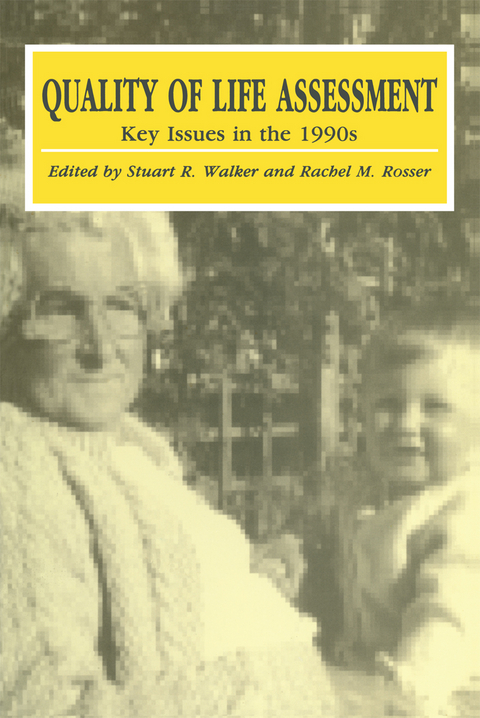
Quality of Life Assessment: Key Issues in the 1990s
Springer (Verlag)
978-94-010-5328-0 (ISBN)
I. Philosophies, Concepts and Key Instruments Involved in Assessing Quality of Life.- 1. The new era of quality of life assessment.- 2. Assessing health-related quality of life for clinical decision-making.- 3. The Quality of Well-being Scale: rationale for a single quality of life index.- 4. Development, testing, and use of the Sickness Impact Profile.- 5. The Nottingham Health Profile.- 6 The McMaster Health Index Questionnaire: an update.- 7. A health index and output measure.- 8. The Index of Health-related Quality of Life (IHQL): a new tool for audit and cost-per-QALY analysis.- 9. A fifteen-dimensional measure of health-related quality of life (15D) and its applications.- 10. The EuroQol quality of life project.- 11. A WHO method for the assessment of health-related quality of life (WHOQOL).- 12. Indices versus profiles — advantages and disadvantages.- 13. The On-Line Guide to Quality-of-Life Assessment (OLGA): resource for selecting quality of life assessments.- II. Assessing Quality of Life in Major Disease Areas.- 14. Measuring the quality of life of patients with cancer.- 15. Measuring the quality of life of patients with rheumatoid arthritis.- 16. Measuring the quality of life of patients with Parkinson’s disease.- 17. Measurement of health-related quality of life in asthma and chronic obstructive airways disease.- 18. Measuring quality of life in hypertension.- 19. Measuring the quality of life of patients with angina.- 20. Measuring quality of life in psychiatry.- 21. Measuring the quality of life of patients with skin disease.- III. Viewpoints and Perspectives.- 22. Ethical questions and their implication for QOL studies.- 23. Industry perspectives on quality of life.- 24. A regulatory view.- 25. The cost effectiveness of pharmaceuticals.- 26.Requirements for health care purchasers.- 27. The importance of quality of life in policy decisions.- Appendices.- 1. Quality of Well-Being Scale.- 2. The Nottingham Health Profile.- 3. The McMaster Health Index Questionnaire.- 4. The Index of Health-Related Quality of Life (IHQL).- 5. 15D Health-Related Quality of Life Questionnaire.- 6. EuroQol Valuation Task.
| Zusatzinfo | XVI, 487 p. |
|---|---|
| Verlagsort | Dordrecht |
| Sprache | englisch |
| Maße | 160 x 240 mm |
| Themenwelt | Medizin / Pharmazie ► Medizinische Fachgebiete ► Pharmakologie / Pharmakotherapie |
| Medizin / Pharmazie ► Pharmazie | |
| Studium ► Querschnittsbereiche ► Prävention / Gesundheitsförderung | |
| ISBN-10 | 94-010-5328-6 / 9401053286 |
| ISBN-13 | 978-94-010-5328-0 / 9789401053280 |
| Zustand | Neuware |
| Informationen gemäß Produktsicherheitsverordnung (GPSR) | |
| Haben Sie eine Frage zum Produkt? |
aus dem Bereich


